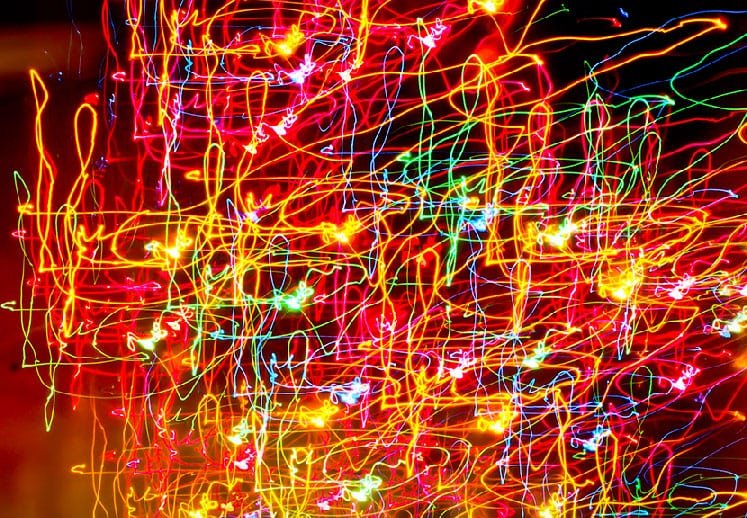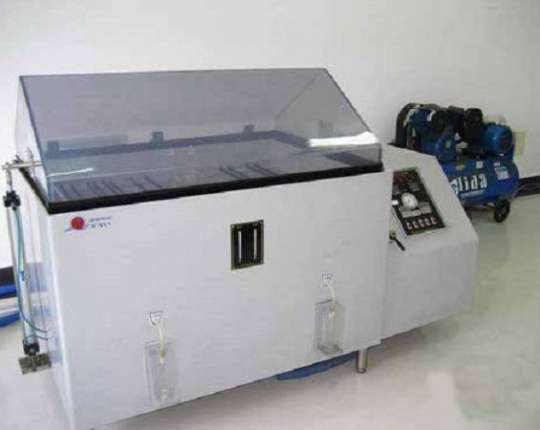First, the basic concept of particle size analysis(1) particles: with a certain size and shape of small objects, is the basic unit of the composition of the powder. It is very small, but microscopic but contains a lot of molecules and atoms;(2) particle size: the size of particles;(3) particle size distribution: a certain way to reflect a series of different particle size particles, respectively, the percentage of the total powder;(4) the representation of the particle size distribution: table method (interval distribution and cumulative distribution), graphical method, function method, common R-R distribution, normal distribution;(5) particle size: the diameter of particles, usually in microns as a unit;(6) Equivalent particle size: When a particle of a physical properties and homogeneous spherical particles the same or similar, we use the spherical particles straightDiameter to represent the diameter of the actual particles;(7) D10, the cumulative distribution of 10% of the corresponding particle size; D50, the cumulative distribution of the percentage reached 50% of the corresponding particle size; also known as the median or median particle size; D90, the cumulative distribution of the percentage reached 90% of the corresponding particle size; D (4,3) volume or mass average particle size;Second, the commonly used particle size measurement method(1) sieving method(2) sedimentation method (gravity sedimentation method, centrifugal sedimentation method)(3) resistance method (Kurt particle counter)(4) Microscope (image) method(5) Electron microscopy(6) ultrasonic method(7) breathable method(8) laser diffraction methodAdvantages and disadvantages of various methodsSieve method: Advantages: simple, intuitive, low cost of equipment, commonly used in samples larger than 40μm. Disadvantages: can not be used for 40μm fine sample; results by human factors and sieve deformation of a greater impact.Microscope: Advantages: simple, intuitive, can be morphological analysis. Disadvantages: slow, poor representative, can not measure ultra-fine particles.Sedimentation method (including gravity settlement and centrifugal settlement): Advantages: easy to operate, the instrument can run continuously, low price, accuracy and repeatability is better, the test range is larger. Disadvantages: test time is longer.Resistance method: Advantages: easy to operate, the total number of particles can be measured, the equivalent concept clear, fast, good accuracy. Disadvantages: the test range is small, easy to be blocked by particles, the media should have strict electrical characteristics.Electron microscopy: Advantages: suitable for testing ultrafine particles or even nano-particles, high resolution. Disadvantages: less sample, poor representation, the instrument is expensive.Ultrasonic method: Advantages: direct measurement of high concentrations of pulp. Disadvantages: low resolution.Ventilation method: Advantages: instrument prices are low, do not have to disperse the sample, magnetic particles can be measured powder. Disadvantages: can only get the average particle size, can not measure the particle size distribution.Laser method: Advantages: easy to operate, fast test, test range, repeatability and accuracy, and can be measured online and dry. Disadvantages: the results affected by the distribution model, the higher the cost of the instrument.Third, the basic principle of laser particle size analyzerLaser diffraction technology began in the small angle scattering, so this technology also has the following name:Fraunhofer diffraction method(Approximately) positive light scattering methodSmall angle laser scattering method (LALLS)At present, this range of technology has been expanded to include light scattering within a wider range of angles, in addition to the approximate theory such as Fraunhofer diffraction and irregular diffraction, and the Mie theory is now used by instrument manufacturers Theory as one of the important advantages of its products.Mickey’s theory is named after a German scientist. It describes the uniform spherical particles in the uniform, non-absorbing medium and its surroundings in the space of the radiation, the particles can be completely transparent or can be completely absorbed. The Millerian theory describes that light scattering is a resonance phenomenon. If a specific wavelength of the beam encounters a particle, the particle produces an electromagnetic vibration at the same frequency as the emitted light source – irrespective of the wavelength of the light, the particle diameter, and the refractive index of the particles and the medium. The particles are tuned and received at a specific wavelength, and the energy is re-emitted within a particular spatial angular distribution as well as a relay. According to the Mie theory, it is possible to produce multiple oscillations of various probabilities, and there is a certain relationship between the cross section of the optical action and the particle size, the wavelength of light and the refractive index of the particles and the medium. If you use the Mie theory, you must know the refractive index and absorption coefficient of the sample and the medium.Fraunhofer theory is named after a German physicist, Franco and Fader, which is based on scattering at the edge of the grain and can only be applied to completely opaque particles and small angles of scattering. When the particle size is less than or equal to the wavelength, the Fraunhofer assumption that the extinction coefficient is constant is no longer applicable (it is an approximation of the Mie theory, that is, ignoring the Mi’s theory of imaginary subsets and ignoring the light scattering coefficient and Absorption coefficient, that is, all the dispersant and dispersive optical parameters are set to 1, the mathematical treatment is much simpler, the color of the material and small particles are also much larger error. The approximate Mickey theory is not applicable to the emulsion ).The laser particle size analyzer is based on the phenomenon of light diffraction, when the light through the particles when the diffraction phenomenon (its essence is the interaction of electromagnetic waves and substances). The angle of the diffracted light is inversely proportional to the size of the particle.Different sizes of particles through the laser beam when the diffraction light will fall in different positions, the location information reflects the particle size; the same large particles through the laser beam when the diffraction light will fall in the same position. The information of the diffracted light intensity reflects the percentage of particles of the same size in the sample.The laser diffraction method uses a series of photodetectors to measure the intensity of the diffracted light at different angles of the particle size of the particle, using the diffraction model, through the mathematical inversion, and then the particle size distribution of the sample.And the diffracted light intensity received by the position detector gives a percentage content of the corresponding particle size.The dependence of the intensity of the diffracted light on the particles decreases with the decrease of the particle size. When the particles are as small as several hundred nanometers, the diffraction intensity is almost completely dependent on the angle, that is, the diffracted light at this time Distributed in a wide range of angles, and the light intensity per unit area is very weak, which increases the difficulty of detection.The measurement of samples under 1um and wide particle size ranges (tens of nanometers to several thousand micrometers) is the key to the laser diffraction granulator. In general, the following techniques and optical path configurations are used:1, multi-lens technologyThe multi-lens system was widely adopted before the 1980s, using a Fourier optical path configuration, where the sample cell was placed in front of the focusing lens and equipped with a number of different focal lengths of the lens to accommodate different particle size ranges. The advantage is simple design, only need to be distributed in the tens of degrees range of focal plane detector, the cost is low. The disadvantage is that if the sample size is wide when the need to replace the lens, the results of different lenses need to be split, for some unknown particle size of the sample with a lens measurement may lose the signal or due to process changes caused by changes in sample size can not be timely reflect.2, multi-light technologyMulti-light source technology is also used in the Fourier optical path configuration that the sample cell in front of the focusing lens, generally only distributed in the range of tens of degrees angle detector, in order to increase the relative detection angle, so that the detector can receive small particles Diffracting the optical signal, and disposing the first or second laser at different angles relative to the optical axis of the first light source. The advantage of this technique is that it is only a detector that is distributed over several tens of degrees, and the cost is low. The measurement range, especially the upper limit, can be wide. The disadvantage is that the small area detector distributed in the small angle range is also used for small Particle measurement, due to the small particles of diffracted light in the unit area of the signal is weak, resulting in small particles when the signal to noise ratio is reduced, which is why the multi-light source system in the measurement range of more than 1500 microns or so, to ensure that a few microns The following small particles of accurate measurement, the need to replace the short focal length of the focus lens. In addition, the multi-lens system in the measurement of samples, the different lasers are turned on, and in the dry measurement, because the particles can only pass through the sample pool, only one light source can be used for measurement, so the general use of multi-lens technology The lower limit of the dry size is less than 250 nm.3, multi-method hybrid systemMulti-method hybrid system refers to the laser diffraction method and other methods of mixing design of the particle size analyzer, laser diffraction part of the distribution only a few tens of degrees range of the detector, and then supplemented by other methods such as PCS, generally a few microns The above is measured by laser diffraction, and particles below a few microns are measured by other methods. Theoretically, the lower limit of the particle size depends on the lower limit of the auxiliary method. The advantage of this method is that the cost is low and the overall measurement range is wide, The best measurement conditions required by the method, such as the concentration of the sample are not the same, are often difficult to balance, and in addition to the systematic error between the different methods, it is often difficult to obtain the desired result in the data fitting area of the two methods unless It is known that the particle size of the sample only falls within the range of the diffraction method or within the range of the auxiliary method. In addition, the multi-method mixing system requires two different sample cells, which is not a problem for wet measurement because the sample can be recycled, but the sample can only be circulated through the sample cell for a dry process, Method of simultaneous measurement, so a variety of methods mixed system in the dry measurement of the lower limit of the particle size can only be hundreds of nanometers.4, non-uniform cross-wide compensation for wide-angle detection technology and anti-Fourier optical systemThe wide-angle detection of non-uniform cross-wide area compensation and the anti-Fourier optical system are developed in the late 1990s. The anti-Fourier optical path configuration is used to place the cell behind the focusing lens, In a very wide range of angles, the general physical detection angle of up to 150 degrees, so that a single lens to measure tens of nanometers to several thousand microns of the sample possible, optical schematic diagram shown in the design of the detector On the use of non-uniform cross and with the increase in the size of the detector area also increased the arrangement, both to ensure that the resolution of large particles when the measurement also ensures a small particle detection signal to noise ratio and sensitivity. No need to replace the lens and other methods can be measured from tens of nanometers to several thousand microns of particles, even the dry measurement, the lower limit can reach 0.1 microns. The disadvantage of this approach is that the cost of the instrument is high relative to the previous methods.The laser beam emitted from the laser is focused by a microscope, pinhole filter and collimator collimation, into a parallel beam of about 10 mm in diameter, the beam is irradiated onto the particles to be measured, a portion of the light is scattered, Leaf lens, the radiation to the radio and television detector array. Since the radio and television detector is on the focal plane of the Fourier lens, any point on the detector corresponds to a certain scattering angle. The array of radio and television detectors consists of a series of concentric rings, each of which is a separate detector capable of linearly converting the scattered light projected onto the above into a voltage and then sending it to a data acquisition card which converts the electrical signal Zoom in, after the A / D switch to the computer.Now the actual structure of the laser particle size instrument has played a great change, but the same principle.At present, people have come to the following conclusions: (1) measuring less than 1mm of particles, you must use the Mie theory;(2) measuring more than 1mm particles, if the lower limit of measurement of the instrument is less than 3mm, the instrument still use the Mie theory, or in the particle size distribution of 1mm near the “out of nothing” a peak;(3) The laser particle size analyzer can use the diffraction theory of the conditions: the lower limit of measurement of the instrument is greater than 3mm, or the measured particles are absorbent type, and the particle size is greater than 1mm;(4) As a universal laser particle size analyzer, as long as the lower limit of measurement is less than 1mm, whether it is used to measure large particles or small particles, should use the Mie theory.Fifth, the composition of laser particle size analyzerA light source (usually a laser) is used to produce a monochromatic, coherent and parallel beam; the beam processing unit is a beam amplifier with an integrating filter that produces a beam of expanded, near-ideal light beams to illuminate the dispersed particles (A coherent strong light source with a fixed wavelength, a He-Ne gas laser (λ = 0.63um).Particle disperser (wet and dry)Measure the scattering spectrum of the detector (a large number of photodiodes)Computer (for controlling equipment and calculating particle size distribution)Through technological advances, the lower limit of measurement can be 0.1um, some up to 0.02umSix, test operation steps1, preparation of equipment to install and disperse the liquid (gas)2, sample inspection, preparation, dispersion and sample concentration check the particle size range and particle shape and whether the full dispersion;3, measurement (select the appropriate optical model)4, the error from the diagnostic system of measurement error (deviation), can come from the incorrect sample preparation, deviation from the theoretical assumptions of the particles and / or due to improper operation and operation of the instrument caused;Seven, commonly used laser particle size meter manufacturersBritish Malvern laser particle size analyzer (abroad)Europe and the United States grams of laser particle size analyzer (Zhuhai)Dandong laser particle size analyzer (Liaoning)Eight, the test object1. All kinds of non-metallic powder: such as tungsten, light calcium, talc, kaolin, graphite, wollastonite, brucite, barite, mica powder, bentonite, diatomaceous earth, clay and so on.2. All kinds of metal powder: such as aluminum powder, zinc powder, molybdenum powder, tungsten powder, magnesium powder, copper powder and rare earth metal powder, alloy powder.3. Other powder: such as catalyst, cement, abrasive, medicine, pesticide, food, paint, dyes, phosphor, river sediment, ceramic raw materials, various emulsions.
Kaynak: Meeyou Karbür



